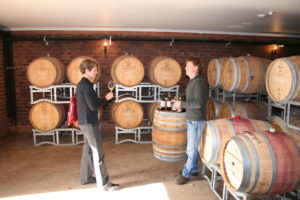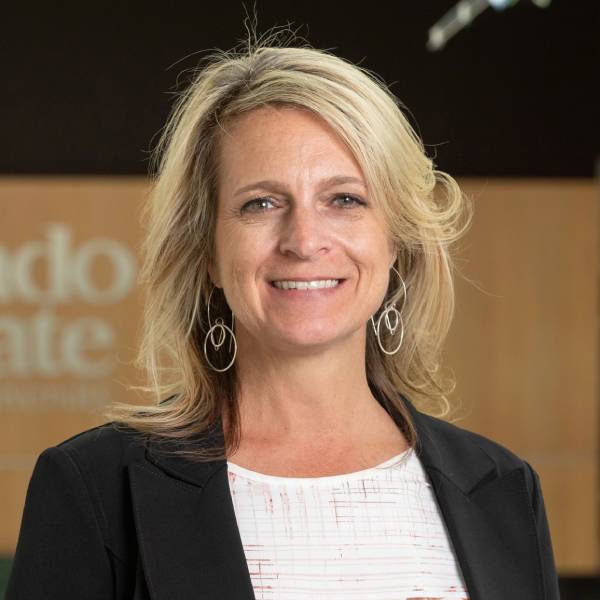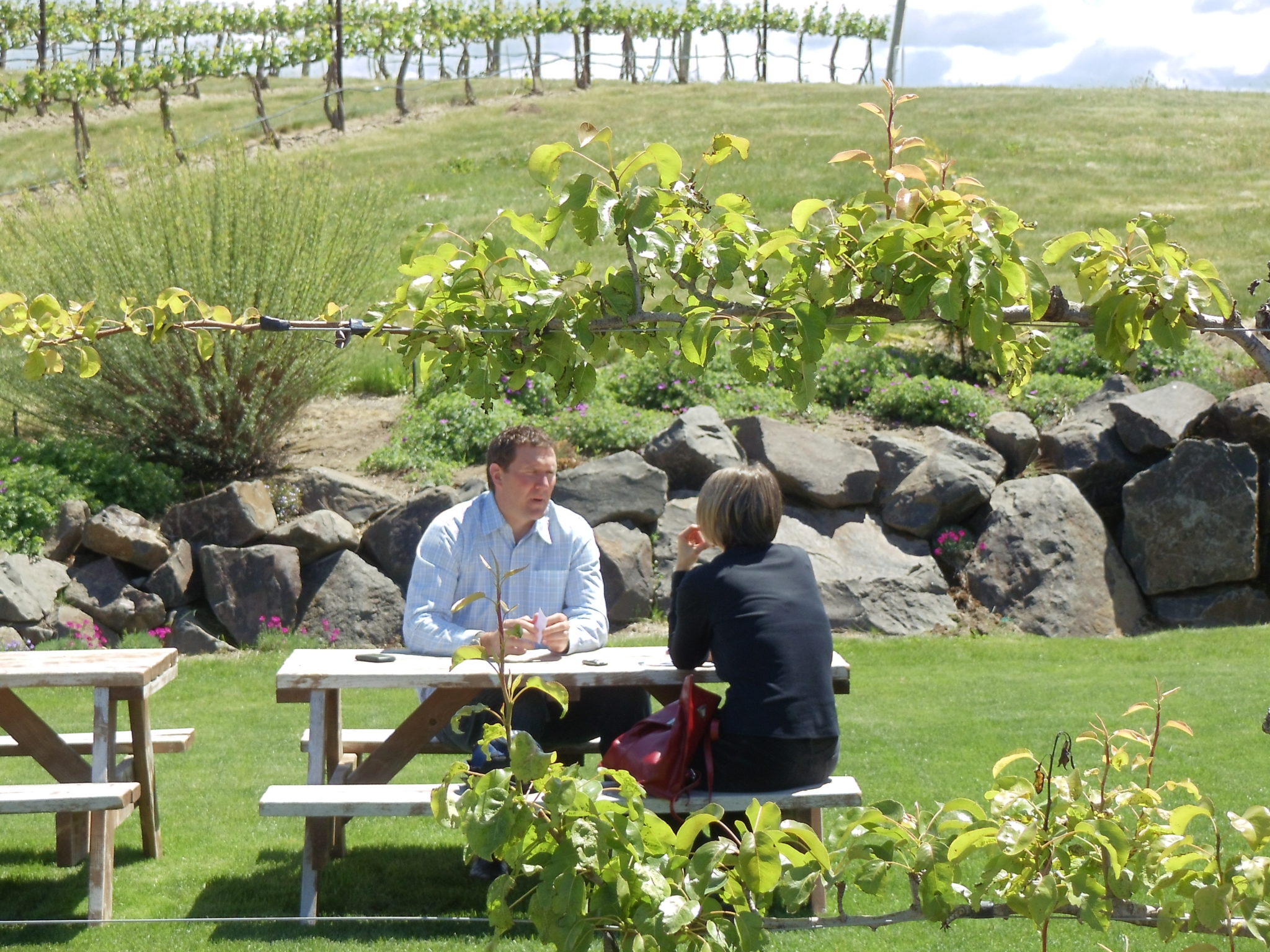
Susan Golicic interviews a winemaker and tastes wine in Margaret River, Australia during a 2009 research trip.
Given the topic, it’s fitting that Susan Golicic came up with the idea that would drive more than a decade of research over a glass of red wine at a conference.
That happened in 2009, and 12 years later, she’s wrapped up a study that involved trips to wine businesses on three continents, countless phone calls and in-person interviews, seven papers, 14 conference presentations and a book called Contemporary Wine Marketing and Supply Chain Management: A Global Perspective.
Along the way, Golicic, a Colorado State University professor of supply chain management, became a sommelier so she could better understand the terminology and particulars of the world’s winemaking regions.
“It was a tremendous amount of work, but it was a lot of fun because we got to travel to those areas and meet the people we did,” Golicic said. “We got to taste some of the wine as well, which was an added bonus to the research.”
Golicic collaborated with Dan Flint from the University of Tennessee and Paola Signori from the University of Verona. Together, they have traveled all over the world, to winemaking regions in Australia, France, Germany, Italy, New Zealand, Portugal, Slovenia and the U.S.

“Changes in Sustainability in the Global Wine Industry”
Susan Golicic, College of Business
International Journal of Wine Business Research
During their trips, they met various producers, marketers and distributors, among others to take a deep dive into the global wine industry. They spoke to numerous smaller wine makers and also learned about the processes of some of the world’s largest brands.
Golicic’s final paper regarding her research into the wine industry deals with the industry’s sustainability efforts. She spoke to SOURCE about the research and what consumers should take away (including the fact that boxed wine might be an environmentally friendly option).
Read the full Q&A below.
You’ve been working on this since 2009. What led you to study this topic, and how has your knowledge evolved?
It started as a conversation with a colleague and some background research, and at the time, the industry was growing more competitive. A lot of existing producers were relying on their reputation, and not really competing based on business strategy, per say.
Most people who got into the wine industry did so either because the generation prior was in the industry or they made a bunch of money doing something else and thought, “Wouldn’t it be cool to have a winery?”
Many of the latter were doctors, tech entrepreneurs, that kind of thing. This means they didn’t have a lot of business background, so there wasn’t a lot of structure or strategy to how they actually managed wine as a business. So, that’s why we did the research.
We collected data for about seven years, and had so much data at that point that we decided we needed to publish and stop gathering new information.
In addition, the economy had changed and gone down and up again, and new wineries were opening up all the time, so we knew we’d have to go back to where we started because it was potentially different.
What did doing research at the wineries entail?
We’d basically go in and take a week and we’d set up appointments with different folks: wine makers, owners, marketing managers, whoever we’d get access to. We’d interview with them, sometimes we’d do tours, they’d share documents, etc …
We’d probably meet with two to four businesses in any given day.
It was really an involved research project, and in 2010, I got a sommelier certification for myself basically to have better knowledge when we would go into interviews so I would know the terminology, including how grapes were grown and how the wine was made and what was on the label and what was typical in a particular region.

In this 2010 photo, Susan Golicic interviews a winery owner in Walla Walla, Washington.
What’s more sustainable: a bottle of wine, a box of wine or a can of wine?
Boxed wine is actually more sustainable because it’s easier to recycle cardboard than it is glass. You can also buy bagged wine with a mylar packaging that is recyclable.
Also, since aluminum is the most recyclable of all materials, cans of wine are another sustainable option.
Meanwhile, the industry itself is looking at shipping in bulk as opposed to bottles because they can save money in the supply chain. They’re basically shipping huge mylar bags that hold bottles of wine and sending it to the market. The market will then put it in its packaging.
When it comes to sustainability in the wine industry, what should people take away?
When we started the interviews, there were certain regions that were really supportive of sustainability. For example, New Zealand is very much about sustainability across the board, so the wine industry there had a couple of organizations tied to that to help folks make good decisions. They also had a goal to be carbon zero within that industry, and if they were showing that their processes went that way, they would get a special label to put on their wine.
In Europe, it was very different. They did not like the word sustainability, there was a lot of confusion. Many of the folks said, “Our customers don’t want to hear that word, they don’t know what it means, it just confuses them,” or they say they think it’s a lower quality of wine so they don’t talk about that.
Most sustainability practices were tied to grape growing. In other words, for producers it would be “We don’t spray the vines, therefore we’re sustainable” or “We might be certified organic because of the way we actually grow the grapes.”
There were fewer that actually practiced sustainability in winemaking because they would still use certain filtration methods or additives. And a lot of the established companies didn’t want to compromise what they were already doing.
However, in the study that was just published, I went back and looked at all the businesses we originally spoke with. I determined if they tried to change things or update things, and there were a higher percentage that were marketing sustainability and talking about doing it because there was a broader acceptance from consumers about sustainable wines.
Adopting sustainability has improved in this industry, but it still has a way to go. It’s largely environmental sustainability. There were a few that had started to talk about the social sustainability aspect; there were a couple of really great examples of companies that had implemented policies to help their employees.
There’s a lot of hard labor in this industry because of the grape growing and harvesting and all of that, and oftentimes there are migrant workers that go from region to region to region and it’s not a fulltime job so they don’t have health insurance and things like that.

Paola Signori and Susan Golicic tour the production facility of a winery in Tuscany, Italy during a 2013 research trip.
If you love wine and care about sustainability, which regions should you favor?
New Zealand’s wines are very sustainable. In 2011, the government told all of the wine producers, “If you’re not certified sustainable, you will not be able to export your wine.” And that meant everyone said, “Ok, we’re getting certified.”
Like New Zealand, Australia also really cares about their ecosystems, so some of the wineries are really pushing for sustainability.
Italy is really growing more in sustainability. In California, some are really sustainable, some are really horrible, you’ll have to do your research on the producers.
That’s because a lot of the big producers in California are about the consistency of wine, and in order for wine to be consistent, you have to treat it, especially since the climate is unpredictable.
Oregon is also pretty sustainable. Their culture is similar to Colorado in terms of supporting sustainability, and a lot of the wineries have some sort of certification whether it’s for sustainable growing or sustainable producing.
What do you want people to take away from this research?
Probably the best thing that I can convey is that the perception that sustainable wine is not as high quality as conventional wine is really false. It really comes down to the actual producer. Some producers make great conventional wine, some producers make great sustainable or organic wine.
I would encourage people not to shy away from organic wine, they might really like it.
And if they don’t, it might not be because it’s sustainable or organic, it might be because that producer does not make a wine that they like. There’s a vast amount of wine out there. I know it can be information overload when people go to the store or go to a restaurant, there’s a lot of choices, and the best thing you can do is try them.
If you really support sustainability personally, you’re going to find a sustainable, organic wine that you like and you should support them.

A 2010 photo of Michael Mondavi pouring wine for his customers at his family winery in Napa, California.
Do you think sustainable wines will take up a bigger part of the market?
I do, because more producers are going in that direction. They know if they use better processes in growing the grapes, the soil is better and lasts longer. And in production I think there’s money to be saved if they aren’t using certain machineries and certain additives, sprays and chemicals.
How did you manage to take something you’re passionate about outside of work and turn it into research?
The thing about research is that especially when you take on big projects, it’s a lot of work, and it can be the kind of thing where you lose motivation part-way through.
Part of the reason this whole project came about was, “Let’s do something we’re passionate about because we’ll be motivated to take it through to the end.”
What’s next for you?
It’s been pretty successful for all of us involved in the research, so I think at this point I’m just going to drink wine!

From left to right: Susan Golicic, a distributor representative, Paola Signori from the University of Verona, Dan Flint from the University of Tennessee, and another distributor representative after a 2010 interview in Verona, Italy.